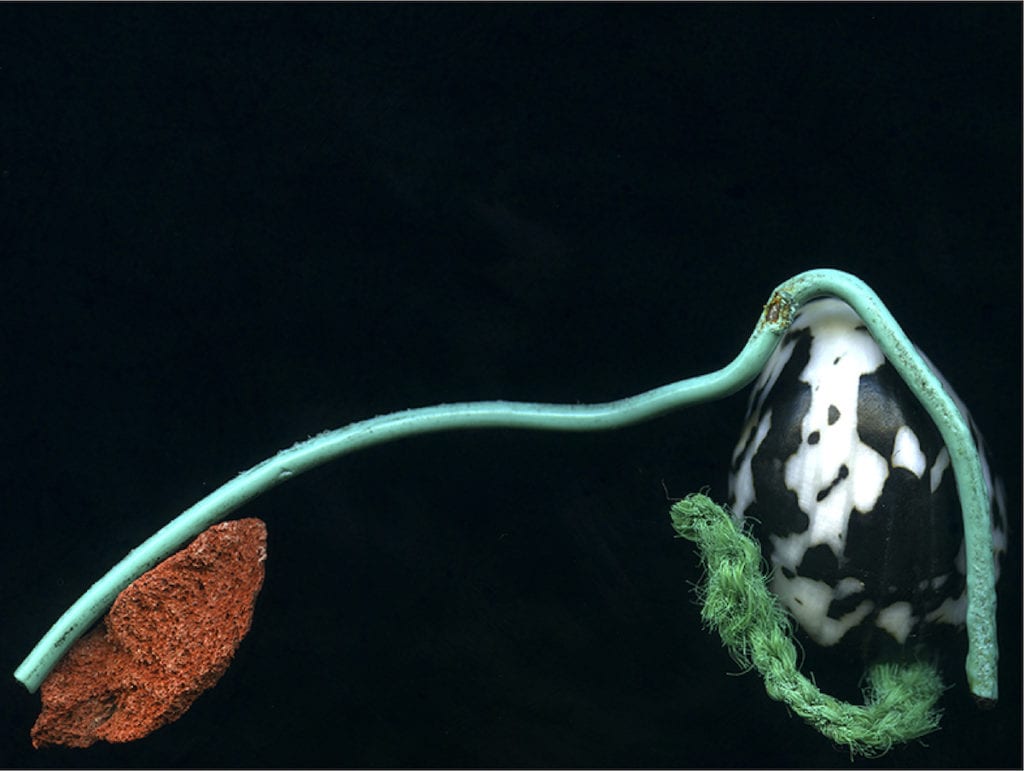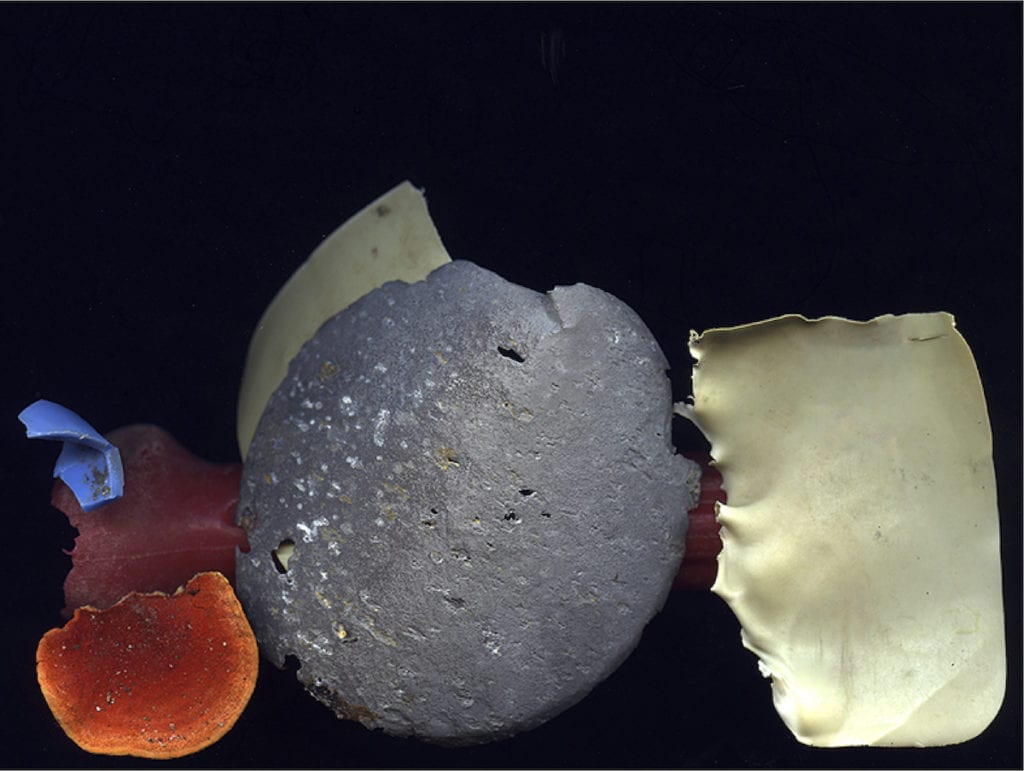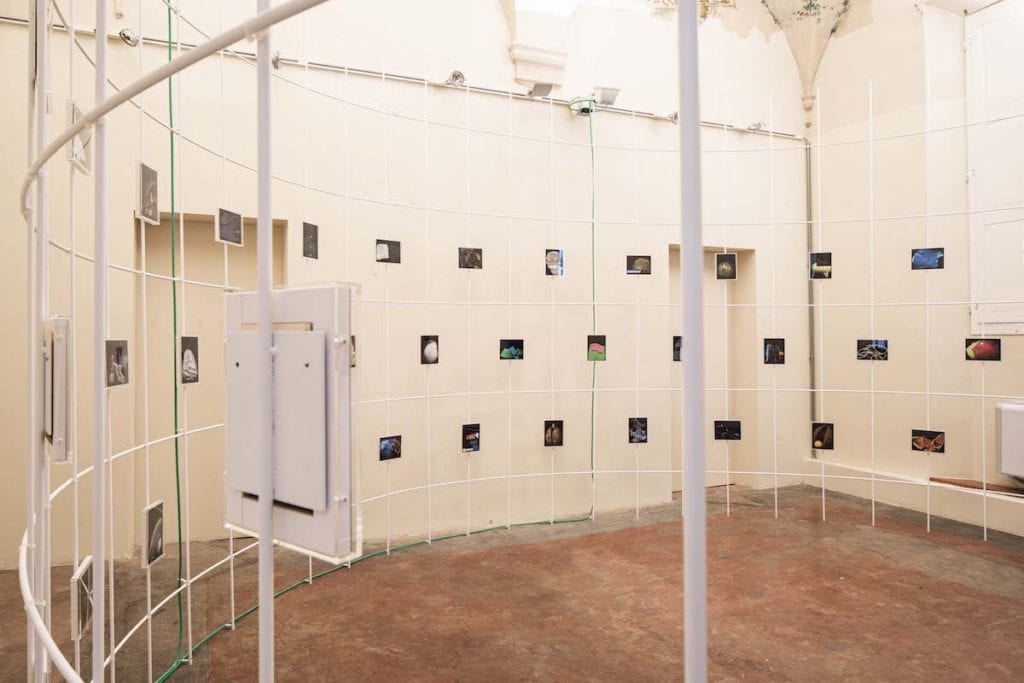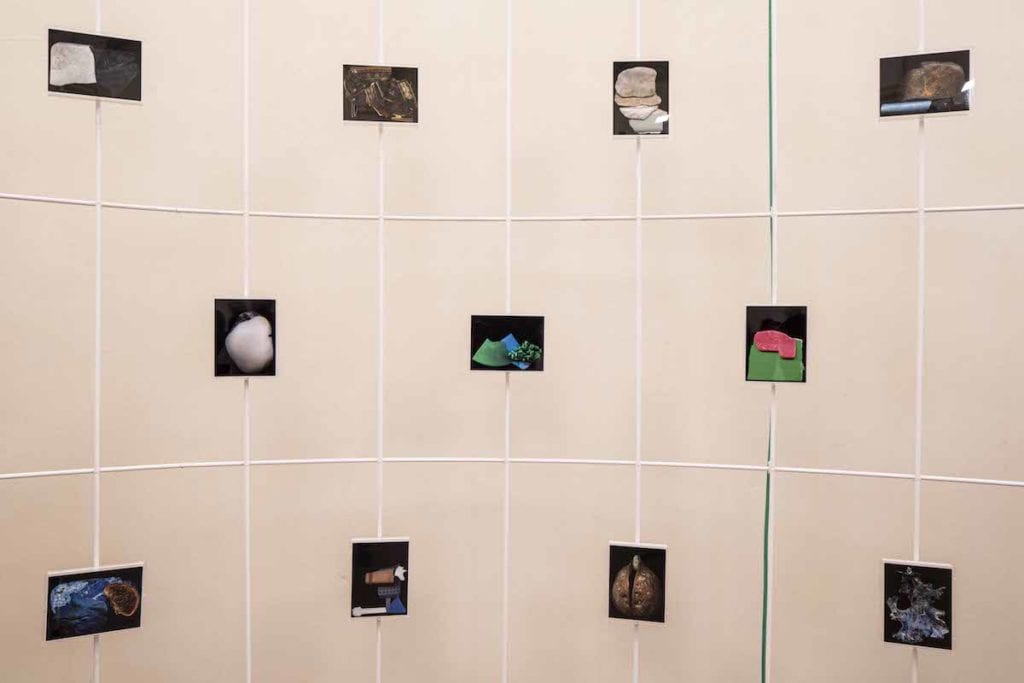Yosuke Bandai’s A Certain Collector B, on show at FOTO/INDUSTRIA 2019, in Bologna, Italy, comprises images of detritus, which the artist collected from the street over the course of a year— stones, plastic, insect remains, and other pieces of waste. Bandai assembled the fragments into intricate sculptures that he then scanned to create photographic prints, thereby preserving objects that were destined for disposal. The arrangements are uncanny and bestow a certain monumentality on the mundane remnants of everyday life.
Bandai created about 12,000 images, from which he selected 70 to exhibit at FOTO/INDUSTRIA. In the first exhibition of the work at Taro Nasu Gallery, Tokyo, in 2014, the artist displayed the physical objects floating in an aquarium, after which he disposed of them, and sold the original scans. For FOTO/INDUSTRIA, Bandai agreed to reincarnate the series, granting curator Francesco Zanot free reign over how to display the work in a new context: a historic room in the city’s music library and museum, the Museo internazionale e biblioteca della musica.
Below, Bandai explains how he conceived of the series and the new meanings it has accrued in this context.

—
What was the catalyst for the project and what inspired you?
I was thinking about having a perspective from below on expressions from above — such as God’s perspective, meta-literature, metaphysics, and aerial photography. Also, my grandmother died and my sister gave birth. I experienced mourning and an echocardiogram of my sister’s womb. I reacted to these events reflexively, like a seismometer, and decided to visualise various bits of rubbish, which had fallen on the ground, from a scanner’s viewpoint.
How did you create the project — what was your process? How did you select which objects to pick up off the street?
During my year of mourning, I developed a daily routine of picking up rubbish and scanning it. I tried to pick up pieces of detritus without consciously choosing them, and select things that would fit on the scanner.
Why did you agree to reinvent the work for FOTO/INDUSTRIA 2019?
The work is free as long as it is independent of my hands. To prevent the series from becoming absolute, its title alludes to a fictitious collector. If there is another opportunity to exhibit the work, the person who oversees it will be different. If someone else handles the work they will then function as this fictitious collector. I am interested in the work accruing meanings distinct from previous exhibitions, and the transmission of stories beyond my intentions.

What new meanings has the work accrued in this context? And how has the context — particularly the historical space in which the images are shown — contributed to that meaning?
I cannot comprehend it immediately. I think I will only understand from my future productions and work: exhibitions and artworks are fragments of the flow of production.
What do you want the audience to take away from the work, specifically when experienced in this setting?
The work is independent of me and functions as a language. At FOTO/INDUSTRIA 2019 the work is framed by the theme of the Technosphere — a stratum left by mankind. What is the last thing remaining when there are no people on Earth? Isn’t it transparent plastic treated in a frame?
Yosuke Bandai’s A Certain Collector B is on show at FOTO/INDUSTRIA 2019 until 24 November 2019.


